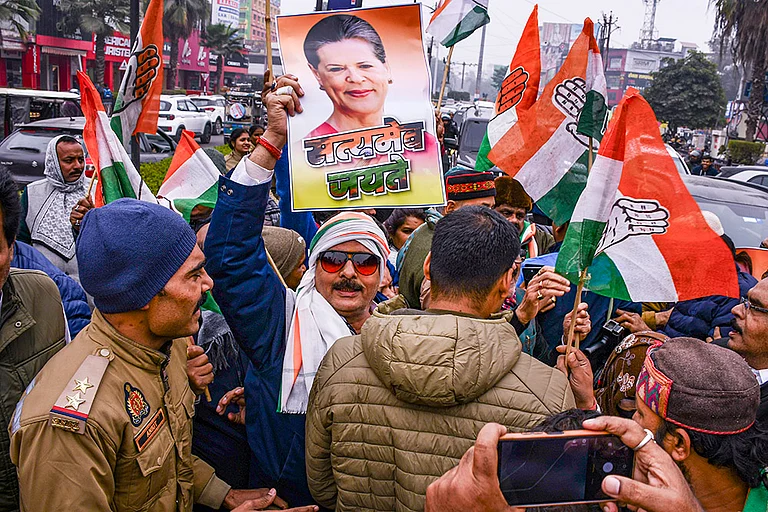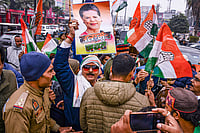By one of those curious coincidences, at just about the same time that India was politely refusing to attend the conference convened in Vienna to push for the signing of the Comprehensive Test Ban Treaty, the US administration was looking for a face-saving way of withdrawing the ctbt which it had presented to the Senate only last week for ratification. By an even more curious coincidence, the reason in both cases is the same. The Indian government rightly pointed out that since it couldnt sign the treaty without first creating a consensus on the issue through a wider debate, and since a caretaker government in its last days in office could hardly initiate the process, no useful purpose would be served if India attended the conference.
In the US too, the reasons for withdrawing the treaty from the Congress are political. There are no differences between the Democrats and the Republicans on the desirability of curbing nuclear proliferation. But there have always been doubts, especially among the armed forces, about the wisdom of limiting Americas options for facing some future, so far unperceived, threat. The country is now in election mode. The primaries, through which the two parties select their presidential candidates, have already begun. As a result no Congressman or Senator is willing to take a stand that could create new problems for his or her party. Voting is therefore taking place strictly on party lines. With the Republicans in a majority in the Senate, the ratification of the ctbt was a project doomed from the start.
Hawks in the Indian establishment, who have long opposed signing the ctbt, are likely to cite the Clinton administrations failure to get it past the Senate as a reason for quietly shelving the issue altogether. The US cannot possibly make another move to get the ctbt ratified till after the next American elections. That means nothing can possibly happen till the spring of 2001 AD. If America elects a Republican President, the ctbt may remain permanently dead. So why make a purely symbolic gesture that would needlessly stir controversy at home, and possibly tie down the hands of Indian scientists at some future date? The answer is that the ctbt should be signed precisely because the gesture would be symbolic. What the hawks consider a good reason for shelving discussions of the ctbt is the best reason for signing it. As things stand, the freedom to test more nuclear weapons that not signing it gives to India is largely theoretical. As the reaction to the Pokharan-II blasts showed, international isolation and economic sanctions and ostracism will follow whether India has signed the treaty or not. On the other hand, signing it would send the message that India considers its present nuclear capability sufficient to meet its minimum security needs, and shares the desire to limit the spread of nuclear weapons across the world. Paradoxically, this would make it easier for India to develop and deploy credible delivery systems, in order to resist nuclear blackmail. For, reassurance apart, it would facilitate the change thats gradually coming over Indias relations with the US and, at one remove, with the other G-7 countries.
Ever since Independence, the compulsions of the Cold War have put the US and India perennially at odds with each other. The reasons for this are to be found in geo-politics. The British had considered India to be the eastern sheet anchor of their defences against Russia and later the Soviet Union. But once British India got partitioned, this role devolved on Pakistan just as the mantle of defender of the West passed from Britain to the US. From Washingtons point of view, Pakistans strategic location on the edge of the Central Asian land mass, and its willingness to lend itself to western designs, made India dispensable. The tilt towards Pakistan reached its peak during the Afghan war, and continued in slightly attenuated form during the first Clinton administration, when Pakistan, through its sponsorship of the Taliban, seemed to be opening the way for the Wests economic conquest of the Central Asian Republics.
But two developments have altered the balance drastically in Indias favour during the past 18 months. The first is the US growing concern over the rise of Sunni Islamic fanaticism in the wake of the Talibans victory in Afghanistan. The second is the Pokhran blasts. Pokhran-II suddenly raised the potential cost of discounting India in its strategic calculations. This resulted, within weeks, in what one senior American diplomat has described as the most fruitful discussions that India and the US have ever held. The Talibans victory has given a new fillip to international terrorism. This became clear last year when terrorists owing allegiance to Osama bin Laden bombed the American embassies in Nairobi and Dar-es-Salaam. But what the US is finding even more disturbing is the fact that Afghanistan is emerging as the epicentre of a new wave of Islamic terrorism that is threatening stability in places as far removed as Dagestan and Chechnya in Russia, Kyrghyzstan, Tajikistan, and Kashmir. To cap it all, far from stopping the outflow of narcotics from Afghanistan, as the West had fervently hoped, the Taliban have increased the area sown with opium poppies by 25 per cent. Most of the terrorists and drug traffickers seem to operate out of Pakistan with impunity, but far from being able to reign in the Taliban Pakistan is itself in danger of being overwhelmed.
Thus, every pillar of Washingtons former policies now lies in ruins. A new set of concerns has taken their place. These require a new set of policies and different allies. The US revealed the change in its perceptions by rejecting Pakistans version of events in Kargil and asking it to withdraw. The US next steps in cementing a new relationship with India will depend entirely upon what India does next.























